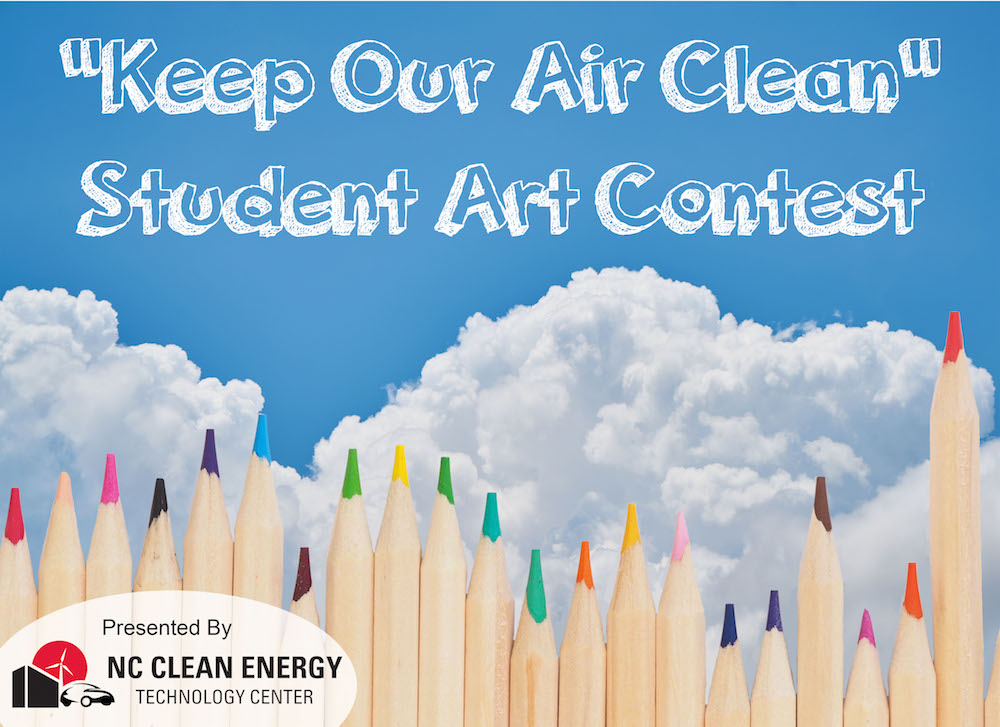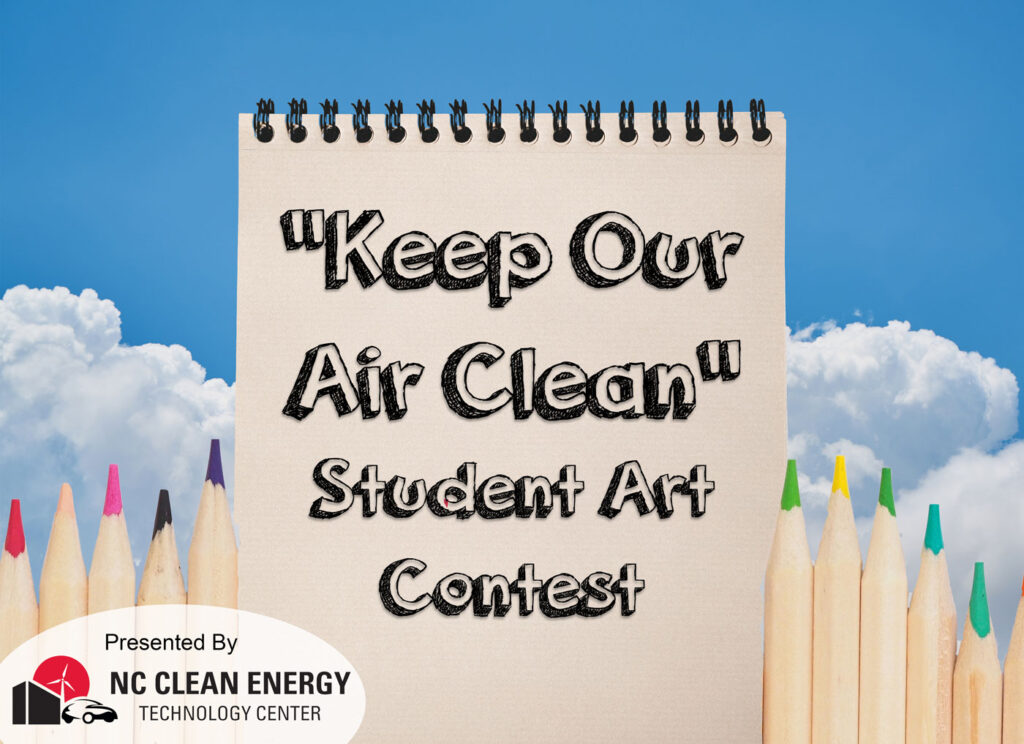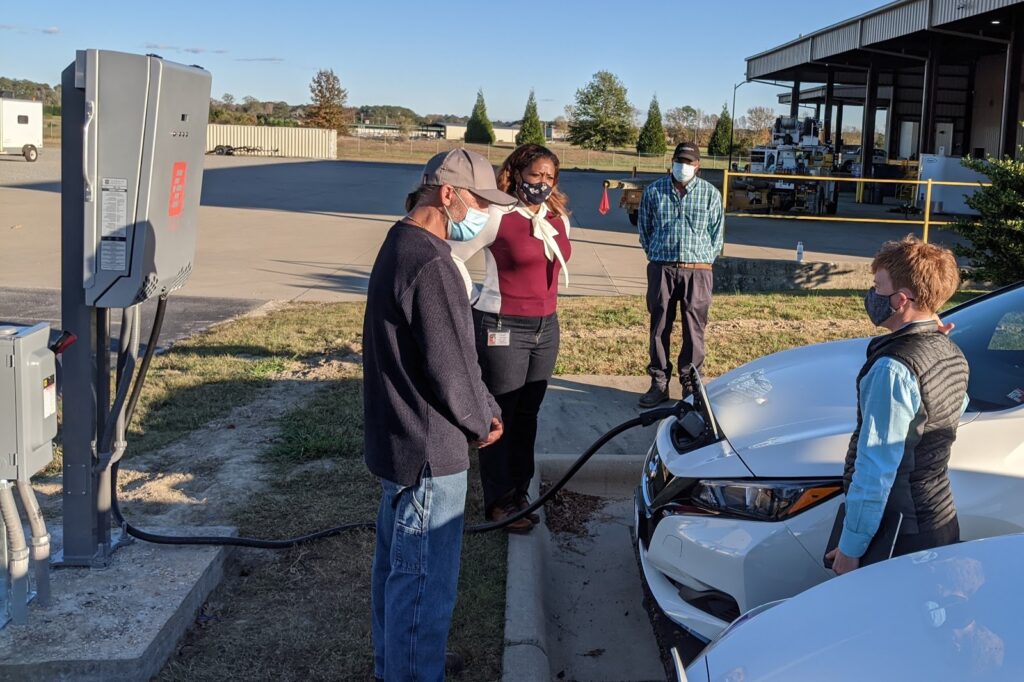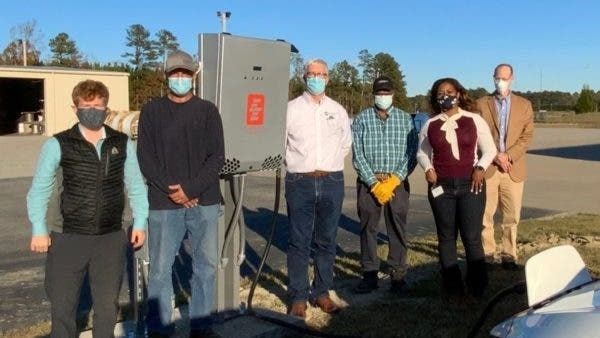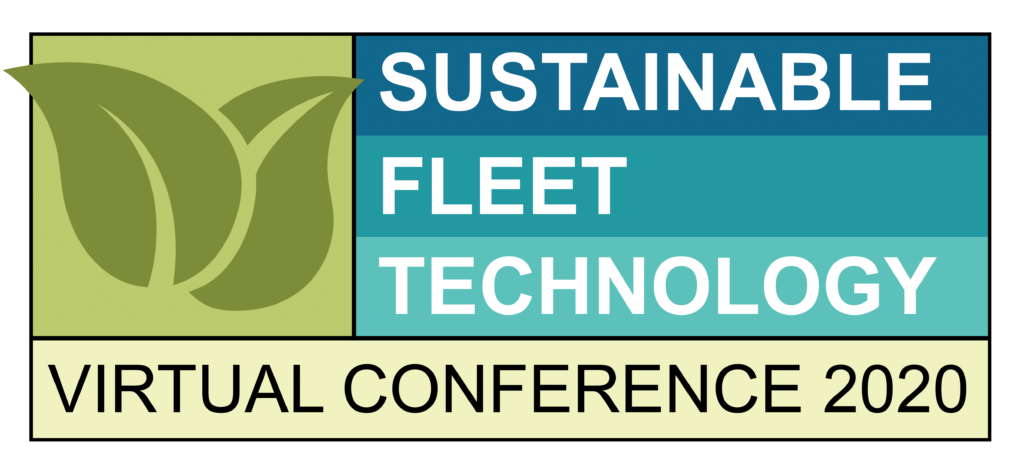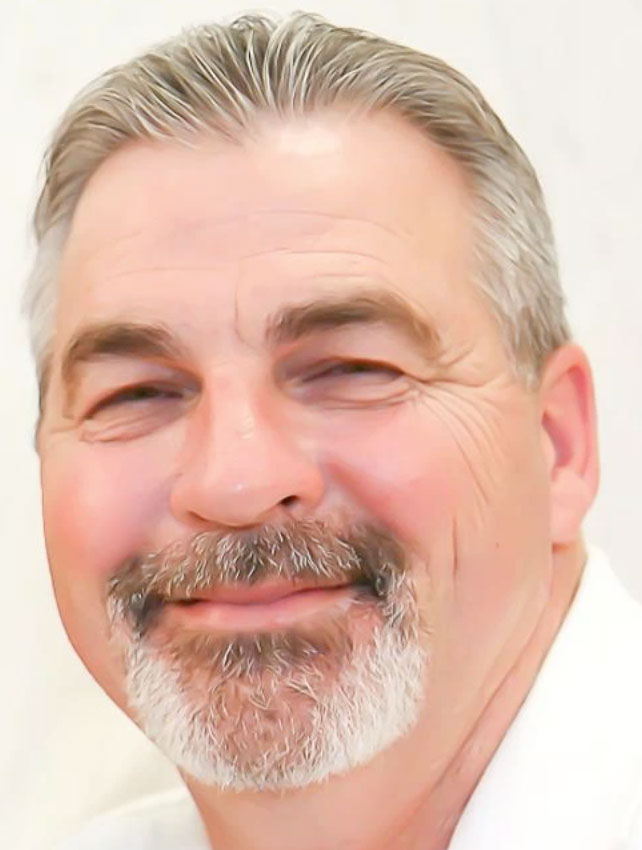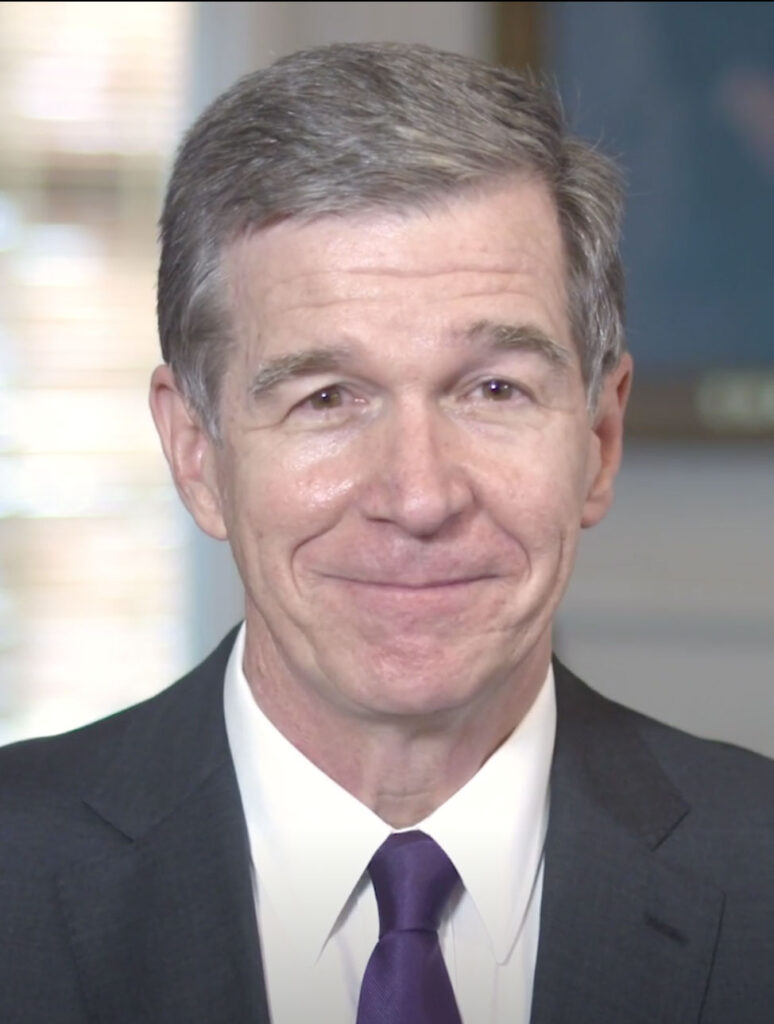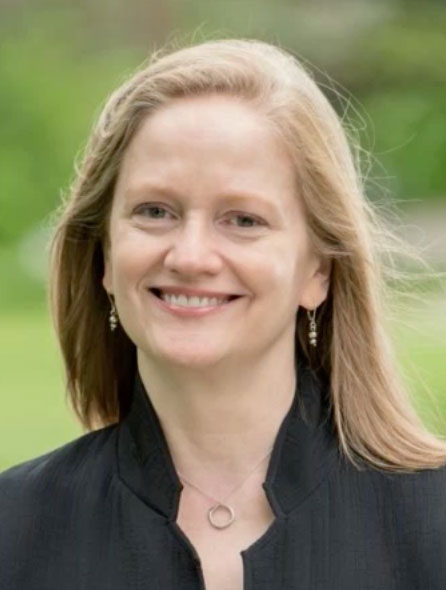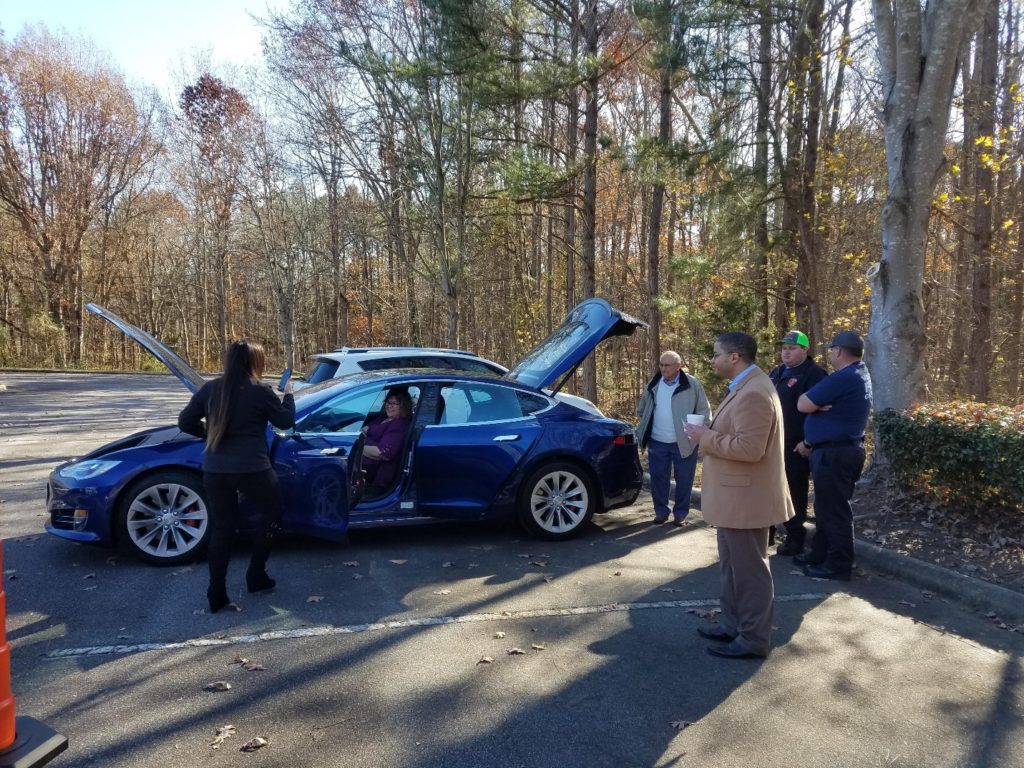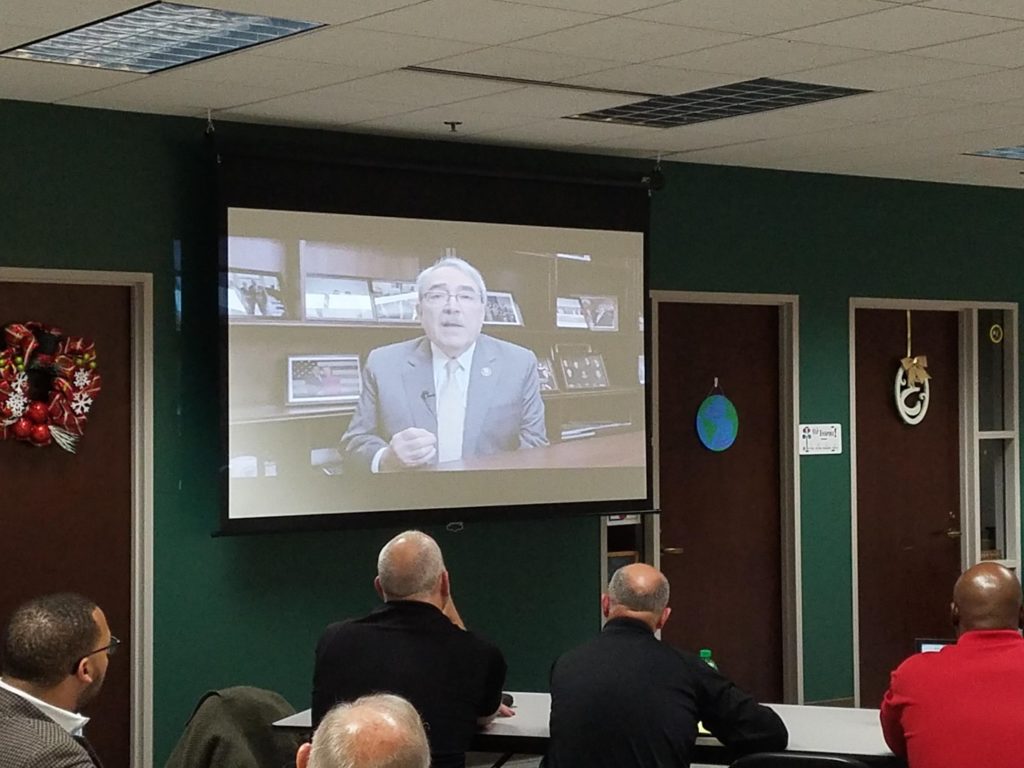In the fourth year of the North Carolina Clean Energy Technology Center (NCCETC)’s “Keep Our Air Clean” Student Art Contest, students in North Carolina from kindergarten through high school submitted their artwork for a chance to be featured on billboards across the state. Students were asked to create art focused on actions that people can take to reduce air pollution from vehicles and help keep the air clean. NCCETC congratulated three artists located in Black Mountain, Hampstead and Cary, N.C.
Heather Brutz, Finance & Operations Manager of the Clean Transportation Program at NCCETC, and leader of the art contest, said her goals were to educate the public about what steps we can take to improve air quality, as well as engage young people’s creative talents to help get the word out. Brutz said she originally came up with the Student Art Contest while recalling a previous job as a middle school teacher and hoped that the contest would engage young people’s creativity to help spread the message about ways we can reduce air pollution from vehicles.
“When I was a teacher, I would often try to engage students in a variety of different ways to teach a lesson. I applied that same thinking when I came up with the idea of the art contest. I wanted to engage a different audience than we sometimes engage in our other educational activities and I wanted to engage them in a different sort of activity than what we were already doing,” Brutz explained. “Artwork is so powerful and I wanted to work together with young artists to spread the message about ways we can keep our air clean.”
This year’s artwork was judged by a panel of four judges: Carla Davis, communications coordinator for NC State University’s Sustainability Office; Erin Champion, academic coordinator for the Department of Forestry and Environmental Resources at NC State University; Traci Rider, assistant professor of architecture in the College of Design at NC State University; and Vincent Fazzio from Lamar Advertising. All of the winners selected by the judges were also voted in the top three artwork in their categories on NCCETC’s Facebook page.
The Center received a great number of submissions from students across the state. Brutz said, “I am very pleased at the number of submissions we received this year. We received 70 art submissions from all across North Carolina. It was a very competitive contest, and while we were only able to choose three winners to have their artwork displayed on billboards, every single young artist who submitted should feel proud of their artwork.”
We talked to winners of the contest about their artwork and what clean air means to them:
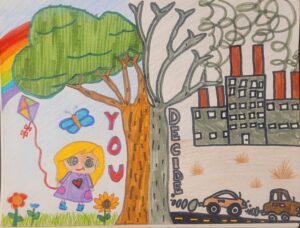
Ella Millwood – Elementary School Winner | Black Mountain Elementary School, Black Mountain, NC
Why did you want to enter the contest?
I wanted to enter because I wanted everyone to see what the world could become.
What does your artwork mean/what were you trying to express?
That people should help keep our air clean.
What does “keep our air clean” mean to you? Why do you think keeping our air clean is important?
I think it is important because if the air is really polluted, we wouldn’t be able to breathe and there would be very little life on earth.
Are you doing things in your own life – like riding your bike, carpooling, etc?
We walk and carpool whenever possible.
What was your reaction when you found out you won the contest?
I was surprised! I didn’t think I would actually win.
What do you hope will come out of your artwork being up on a billboard for people to see?
People to stop polluting our air and realize what the world could be.
Anything else you’d like to share.
I think that’s all!
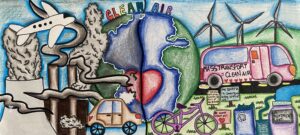
Vivienne Butanis – Middle School Winner | Surf City Middle School, Hampstead, NC
Why did you want to enter the contest?
I wanted to enter the Student Art Contest because I wanted to express my disdain for the way we are treating our environment. It was an art class assignment to connect our art class to science. It was a way for me to see how I could interpret the current conditions of our environment into an art piece.
What does your artwork mean/what were you trying to express?
My artwork is trying to express how badly we are currently treating the environment. My artwork depicts our earth from two points of view: the first point of view shows where the air is polluted, and another point of view of how our environment might look if taken better care of.
What does “keep our air clean” mean to you? Why do you think keeping our air clean is important?
Keeping our air clean is important to me because at the rate we are burning fossil fuels and destroying the ozone layer, the earth won’t be inhabitable much longer which is a big part of why taking care of the environment is vital. We are not protecting the environment for just ourselves but for generations to come.
Are you doing things in your own life – like riding your bike, carpooling, etc?
I like to ride my bike and skateboard so I can get to places without having to increase my carbon footprint. It’s easier to get around in a coastal community only using a skateboard and a bike.
What was your reaction when you found out you won the contest?
I was very surprised and happy because I saw this contest as a good opportunity to put myself out there. My teacher says that art is not meant to be hidden in a drawer. We should put our work out there to cause a change. Sometimes that change is as simple as a thought.
What do you hope will come out of your artwork being up on a billboard for people to see?
I hope that people can see the current state of our environment and strive to make it better. Hopefully it will spark a change in everyone. We can not do everything but we can all do something.
Anything else you’d like to share.
Thank you for the opportunity of this contest that allows us to connect and reach people outside of our communities.

Ashleigh Smith – High School Winner | Cary Academy, Cary, NC
Why did you want to enter the contest?
I entered the contest because I thought that it provided a unique opportunity to spread an important message, and as an artist I really love to use my artwork to help out in my community if I can. It was also just really fun to make!
What does your artwork mean/what were you trying to express?
There is a really nice greenway near my house and my family and I love to use it to get some exercise or a breath of fresh air by walking, running, skateboarding, or riding our bikes. I was inspired by that greenway and my brother’s love for mountain biking to create a piece that incorporated both and displayed a love for the beauty of nature and the outdoors, which will hopefully help convince people to help keep their air clean.
What does “keep our air clean” mean to you? Why do you think keeping our air clean is important?
The state of our environment is more important to how we live our lives than I think a lot of people realize. If we care for our environment, it will care for us too and that can be as simple as carpooling with a friend or riding your bike to the store instead of driving.
Are you doing things in your own life – like riding your bike, carpooling, etc?
Yes! I take regular walks with my mom around our neighborhood, and I always try to organize a carpool when going someplace with friends because it’s both environmentally-friendly and fun.
What was your reaction when you found out you won the contest?
I was so surprised, I couldn’t believe it! Everyone who submitted artwork is really talented and I’m glad that my work could be among theirs as well.
What do you hope will come out of your artwork being up on a billboard for people to see?
I hope that it will inspire people to see the beauty and opportunities that nature holds, and further strive to understand how and why we need to take care of the air.
Anything else you’d like to share.
Special thanks to my brother for modeling for me, as he is actually the person on the bike silhouetted in my art piece. He let me take pictures of him riding and then I used them to create my work.
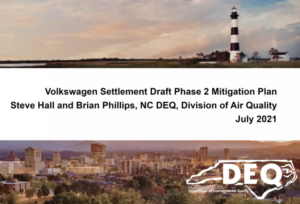 The NC Clean Energy Technology Center (NCCETC) partnered with the Division of Air Quality to host a series of public information sessions in July to explain the draft plan to those interested in receiving funds for eligible projects. The recordings and presentations from the public information meetings can be found online here.
The NC Clean Energy Technology Center (NCCETC) partnered with the Division of Air Quality to host a series of public information sessions in July to explain the draft plan to those interested in receiving funds for eligible projects. The recordings and presentations from the public information meetings can be found online here. 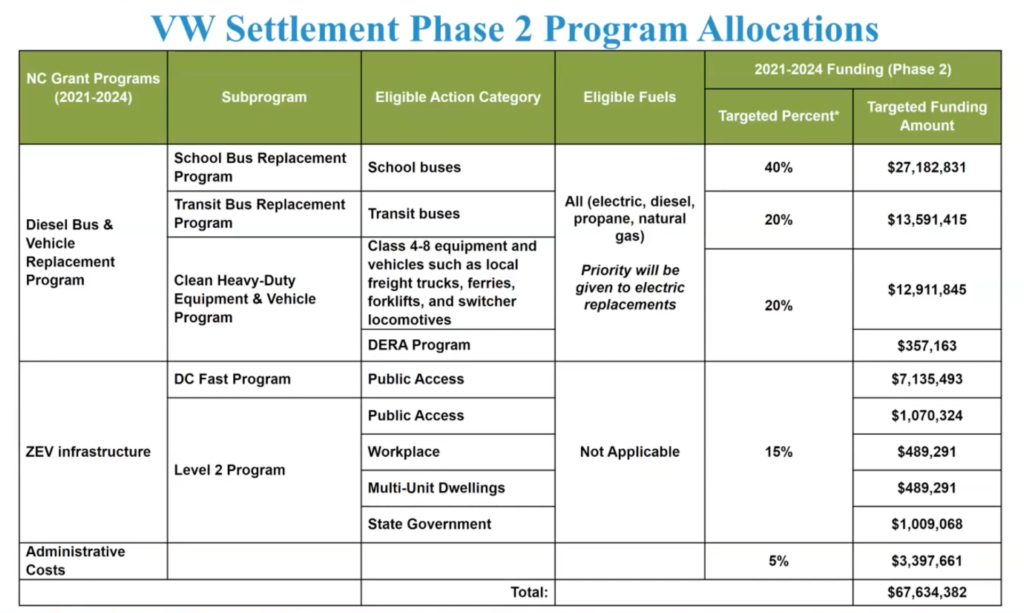 Public agencies as well as public/private partnerships will be eligible for Phase 2 funding. The Draft Phase 2 VW Mitigation Plan currently allocates 80 percent of funding to the Diesel Bus & Vehicle Replacement Program and 15 percent for the ZEV Infrastructure program. Through the Diesel Bus & Vehicle Replacement Program, 40 percent of Phase 2 funding will go towards replacing school buses, 20 percent of funding will be eligible for transit bus replacements and another 20 percent will be eligible for clean heavy-duty equipment and vehicle replacements.
Public agencies as well as public/private partnerships will be eligible for Phase 2 funding. The Draft Phase 2 VW Mitigation Plan currently allocates 80 percent of funding to the Diesel Bus & Vehicle Replacement Program and 15 percent for the ZEV Infrastructure program. Through the Diesel Bus & Vehicle Replacement Program, 40 percent of Phase 2 funding will go towards replacing school buses, 20 percent of funding will be eligible for transit bus replacements and another 20 percent will be eligible for clean heavy-duty equipment and vehicle replacements.
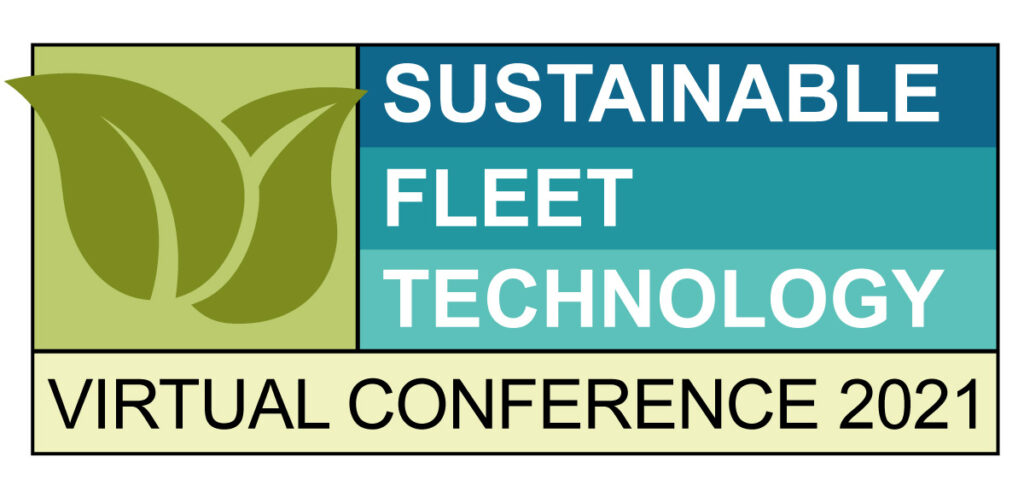
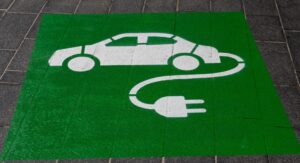 Currently, both public and private fleets in the United States are gearing up for an electric vehicle revolution as the transition towards vehicle electrification expands. Transitioning entire fleets away from conventional fuel vehicles, however, is a much more complex process than individuals deciding to go electric.
Currently, both public and private fleets in the United States are gearing up for an electric vehicle revolution as the transition towards vehicle electrification expands. Transitioning entire fleets away from conventional fuel vehicles, however, is a much more complex process than individuals deciding to go electric.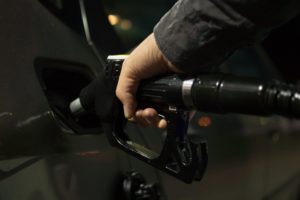 Alternative fuels such as hydrogen and natural gas have proven to be viable ways for fleets to reduce emissions and help conserve fuel. Not only are alternative fuels featured in a session on fleet decarbonization, but attendees can also learn from success stories about propane autogas and natural gas applications in addition to a session focused on hydrogen as a transportation solution.
Alternative fuels such as hydrogen and natural gas have proven to be viable ways for fleets to reduce emissions and help conserve fuel. Not only are alternative fuels featured in a session on fleet decarbonization, but attendees can also learn from success stories about propane autogas and natural gas applications in addition to a session focused on hydrogen as a transportation solution.




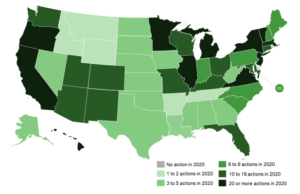 The
The 